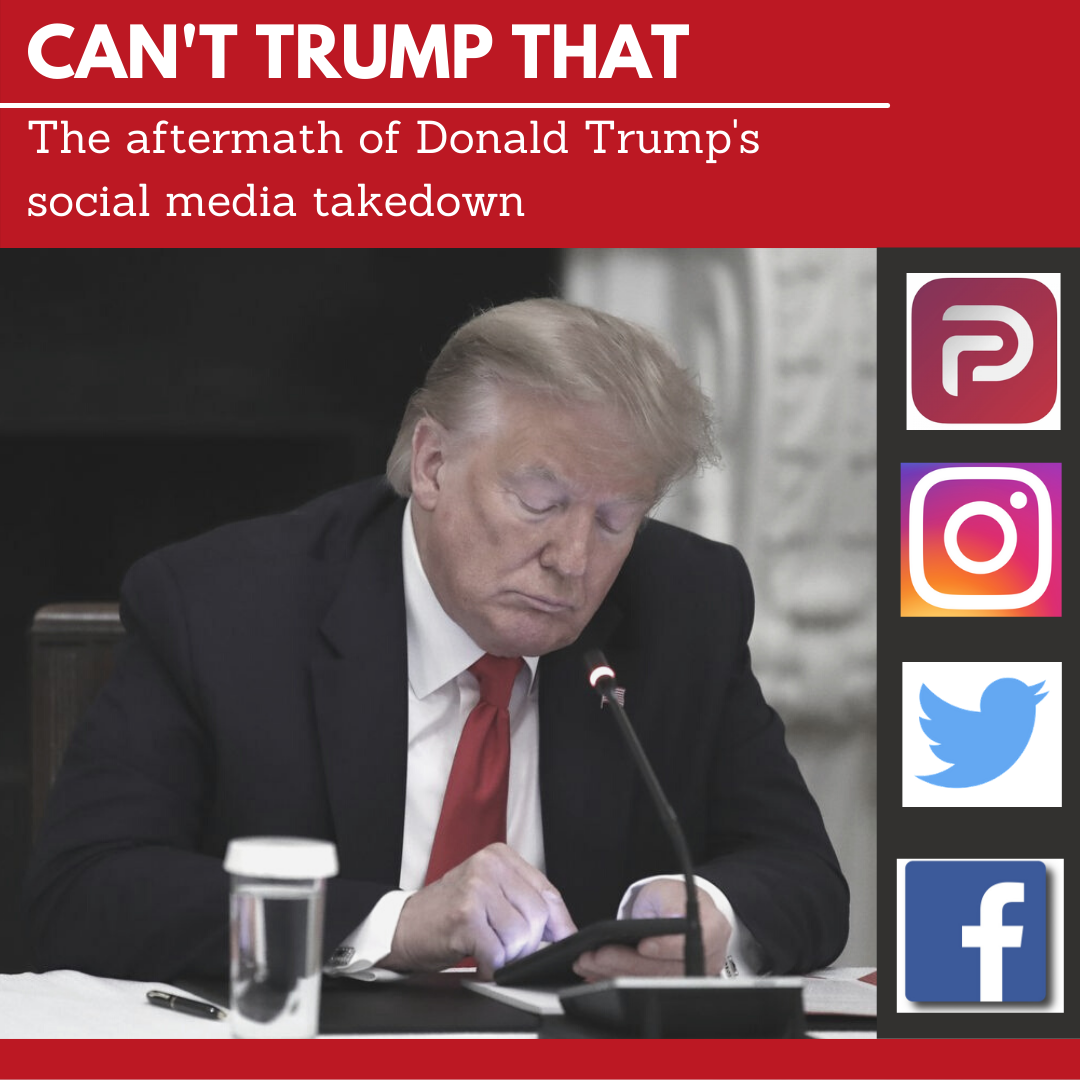Hannah Baillie, Editor.
After a year filled with unrest, controversy, and riots, many Americans were happy to say goodbye to 2020. But the dawn of a new year has brought even more chaos for our neighbours in the South. The riots that took place in the US Capitol on Jan. 8, 2021 led to upset, outrage, and yes, the banning of Donald Trump’s social media accounts.
One needs to look no further than Donald Trump to understand the power of social media. @realDonaldTrump, the President’s personal Twitter account, had over 88 million followers. And after 12 years of controversial tweets, it appears that this platform will no longer be giving a voice to Donald Trump’s incendiary messages.
So, what happened exactly? Thankfully, Twitter has very clearly laid out their reasoning for banning @realDonaldTrump’s personal profile. To summarize, they claim that tweets posted by Donald Trump on Jan. 6, 2021 violated the platform’s glorification of violence policy and led to riots on Jan. 8. The nature of the tweets, according to Twitter, also risked inciting further violence and instigated plans for future armed protests.
Twitter’s decision to permanently ban Donald Trump’s account followed similar actions by Facebook and Instagram, who banned the president’s personal profiles until at least the end of his presidency. Their reason for doing so was similar to Twitter – they argued that Trump seemed intent on using his social media profiles to undermine the peaceful transition of power to President-Elect Joe Biden.
While it’s not surprising that Donald Trump’s tweets have caused yet another debate, the actions of Facebook, Twitter, and Instagram did surprise many. Global leaders like German Chancellor Angela Merkel have voiced concern over the power that these big tech companies have on individuals’ freedom of speech. Merkel’s concerns were echoed by other EU leaders, giving rise to a growing sentiment that big tech companies should be subjected to further government intervention.
But whether or not the social media sites’ decision to ban @realDonaldTrump is truly a violation of freedom of speech remains a topic of contention. American scholar David Kaye reminds people that freedom of speech exists not only for individuals, but for companies like Twitter, Facebook, and Instagram too. Since Trump’s posts violated Twitter’s own policies against glorification of violence, Kaye argues that they had a right to remove his account.
The decision to ban Donald Trump resulted in major repercussions for the social media platforms. Twitter alone saw a 12% reduction in stock value, losing approximately $5 billion dollars after removing @realDonaldTrump. The backlash received from both domestic and international audiences was intense, giving rise to a conversation on the power of big tech companies. Nonetheless, it appears as though the actions of Twitter, Facebook, and Instagram will be mimicked by other industry leaders.
Parler, a relatively new social media site catering to a predominantly far-right audience was identified as a likely platform for Trump to use now that he is banned from the mainstream channels. But almost as soon as this prediction arose, Apple, Google, and Amazon decided to drop Parler from their app and web hosting services. In doing so, they demonstrated solidarity with other big-tech firms and made it increasingly difficult for Trump’s voice to reach mainstream audiences.
So, what does the end of Donald Trump’s social media rampage mean for the rest of the world? The jury’s still out on that one; but, some experts suggest that Trump’s removal from mainstream social media sites will lead to a greater number of smaller, more ideologically-segregated platforms with niche audiences. And if the opposition to Trump’s social media ban in Europe is an indicator of future policy changes, it is possible that nations in that region will explore further government intervention in big tech.
At the end of the day, social media is still a new and emerging tool. The impacts of mass communication and digital interaction are still being explored. As we develop a greater understanding of social media and its impact on society, we will be able to manage our online world with more care and intention. But in the meantime, we can all breathe a sigh of relief now that social media’s most infamous user has been silenced.





